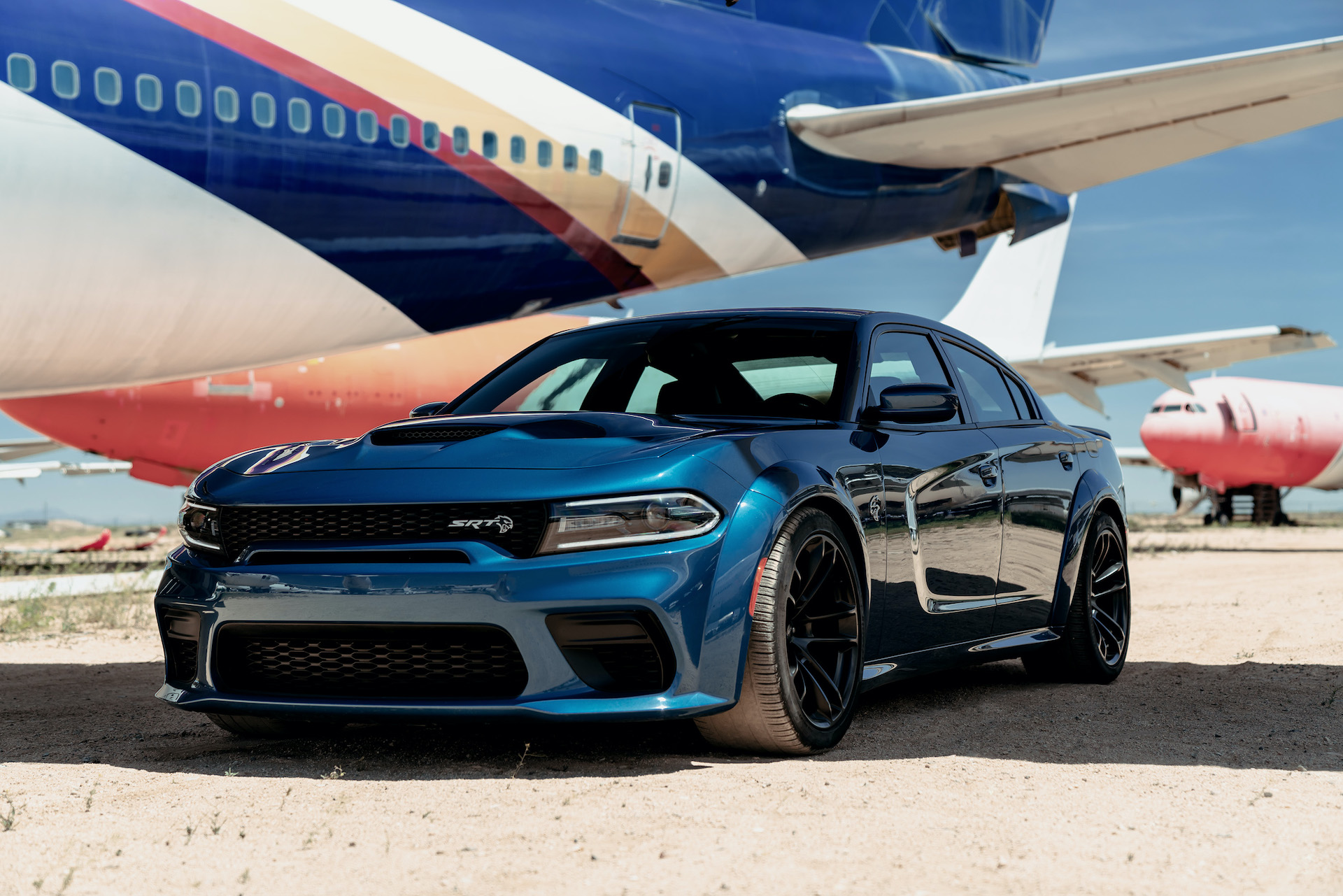
Few new cars available in the United States have gone as long as the 2020 Dodge Charger without a significant redesign. While the Charger was overhauled in 2011 and given a needed interior upgrade alongside a sleeker exterior look, it is still the same fundamental car underneath that it was when it debuted in 2005. That's right; the bones underneath this unabashedly American sedan are now 15 years old.
While it may be old, we still like the Dodge Charger and rate it a 6.3 overall. (Read more about how we rate cars.)
Thanks to constant updates to its engine offerings (including some wild performance variants), the Charger has managed to remain relevant among more popular crossovers. For 2020, it gets two new performance variants: the R/T Scat Pack Widebody and the SRT Hellcat Widebody. Mirroring similar offerings on Dodge's two-door Challenger, the Widebody variants get a wider track (hence the name) and exaggerated fenders to accommodate it. The difference is most apparent in the rear, where Dodge sculpted aerodynamic elements into the bumper to make the wider fenders flow with the existing design.
Review continues below
A Daytona 50th Anniversary Edition on the SRT Hellcat Widebody gets an extra 10 horsepower along with unique exterior graphics, but is limited to just 501 units. The existing SXT, SXT AWD, GT, R/T, R/T Scat Pack and SRT Hellcat models carry over from the 2019 model year.
Every Charger carries the same silhouette introduced back in 2005, which was itself inspired by the Coke-bottle profile of the 1960s staple of the same name. The SXT model gets rental-car-basic exterior looks, but higher trims can be augmented with flashy aesthetic add-ons such as hood scoops, chiseled rocker panel accents, various spoilers and upsized wheels. The interior design, which is also just a reskin of the 2005 model, has a few retro touches but is otherwise fairly contemporary.
Dodge offers a host of powertrains in the Charger, including a workhorse V-6 and three different V-8s. The 3.6-liter V-6 is proven and competent (and a far better engine than the 6-cylinder options offered in the Charger's early days) and is paired to the same fundamental 8-speed offered up and down the Charger range. The true monster of the group is the supercharged, 6.2-liter V-8 in the SRT Hellcat and SRT Hellcat Widebody, the latter of which can hit 60 mph in just 3.6 seconds on the way to a 196-mph top speed.
The Charger is a large car, but thanks to Dodge's performance-friendly engineering approach, all of its variants are competent handlers. Performance suspension upgrades are offered on most trims, including the V-8 models, which get stiffer springs and sharper damping even in base form. Hellcat models are offered with adaptive suspensions for jack-of-all-trades ride and handling, and while they offer brutal acceleration and surprisingly good road-holding, drivers are quickly reminded that they weigh about as much as most mid-size family crossovers when the road (or track) turns twisty.
The Charger offers plenty of shoulder and elbow room and space in the rear for three passengers, but it's not as roomy as one might expect for a car this large.
The 2020 Charger offers respectable standard equipment, including a 7.0-inch touchscreen infotainment system with Android Auto and Apple CarPlay compatibility, satellite radio and Bluetooth connectivity.
While the Charger's age precludes it from obtaining top safety nods, it can be equipped with blind-spot monitors automatic emergency braking and several other key occupant protection systems.
0 Kommentarer